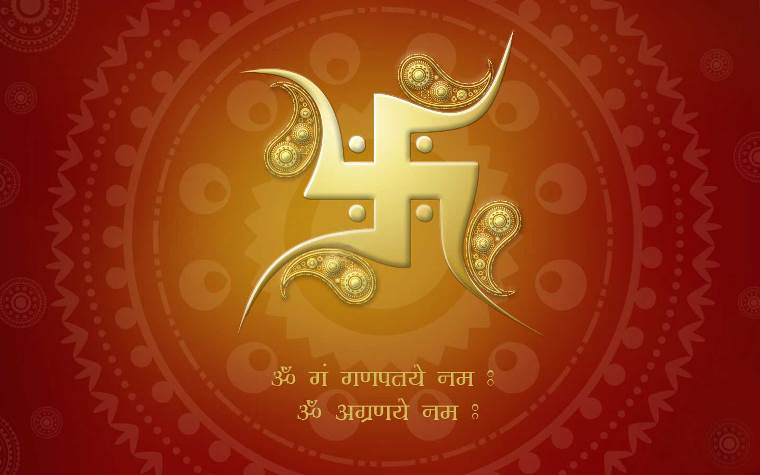Because religion is an important part of most Indians’ lives, you will probably be invited to some religious celebrations or place of worship during your stay in India. No matter what the religion, take care to be respectful and not to cause offense when attending a religious place or event. You may not be allowed into certain parts of some temples, especially the sanctum sanctorum. Remember that all temples, monasteries, gurudwaras (Sikh temples), mosques, etc., including the most famous ones that attract many tourists, are places of worship and not mere tourist attractions.
In any place of religious worship, refrain from smoking, talking loudly, holding hands or even touching a member of the opposite sex, spitting, and drinking alcohol. Turn off your cell phone or put it on silent mode before entering. Don't disturb monks, nuns and other worshippers during prayer. Remember that religious festivals are important rituals.
Shoes must be removed before entering a holy place, so it is best to wear inexpensive rubber sandals (chappals) that can be easily slipped off at the entrance. Sometimes even socks are not allowed in temples. Often there is a place for washing the feet outside the temple, in which case you should wash them before going in. If you wear good shoes to the temple, leave them in the care of a shoe-keeper or in the car.
There are some temples where ladies will not be admitted unless they are wearing a sari, though even Western clothes are acceptable in most temples as long as they are modest. A few temples require men to take off their shirts, and sometimes men may be required to wear a dhoti as well. A dhoti is a length of cotton cloth wrapped around the waist and tied into sort of a skirt. You can put it on over your pants and take it off as soon as you leave. Everyone is required to cover his or her head before entering a mosque or Sikh gurudwara.
When visiting temples and gurudwaras, you may be offered some holy water or other forms of prasad (offerings blessed in the temple, usually some form of sweets), which you should not refuse. Always accept prasad with both hands together, with the right a little on top of left. However, in the interest of health, you may want to do as many Indians do, which is to touch the water to your lips and then put it on top of your head. You can also do this with milk, though of course the result is a bit messy. Unfortunately, drinking either of these can be enough to cause a severe bout of Delhi Belly.
You may also offered prasad consisting of sweets. Don't refuse it, but be discriminating about whether it is safe for you to eat. Food that is hot and fresh is usually OK, depending on how it is served. If in doubt, receive it respectfully and take it With You to share with others. Most Indians will be delighted to have some, and it is not likely to have the same effect on them. Prasad should always be shared, but any prasad that hasn't been given away may be put in a river or stream. It shouldn't be thrown on the ground or even fed to animals.
Refrain from touching any religious statues or holy pictures even if they are just crammed into a corner with other items, which is often the case, and never put anything on someone's personal altar, even an offering, without permission. Don't touch any other sacred items, including books, without asking first.
You should also refrain from putting any religious books or images of any kind (photos, statues, drawings, etc.) on the floor because people may take offense.
When walking around a temple or shrine, always go around it in a clockwise direction, keeping it to your right.
Leather items are offensive to traditional Jains and Hindus, and pigskin is particularly offensive to Muslims. Leave all leather items in your room whenever you are going to any items (wallet, luggage, briefcase, religious shrine or ceremony. The easiest thing is to use only non-leather items (Wallet, luggage, briefcase, purse, belt, shoes, etc.) while in India so you never have to think about it. Don't make the mistake of assuming that people automatically condone the use of leather just because they seem cosmopolitan.

Swastika as a Sacred Symbol
Many visitors to India are initially shocked and horrified to see that the swastika is used extensively all over the country. Although in the West and many other parts of the world, the swastika is a symbol that is hated because of its association with Hitler and the Nazis, in India in retains its original sacred meaning and is greatly revered. Hitler chose the swastika because it is an auspicious symbol of great power, but he inverted it and thereby made his version extremely inauspicious. [Note: although you see it going both ways nowadays, mainly because the knowledge that there is any difference has been largely lost, originally it had the arms turning to the right.] Any negative associations you may have with this symbol should be kept to yourself as they do not apply here.
Learn to pilgrimage tours in India and find perfect destination for nature, culture and increase. Discover the India Tourism with swantour.com, its laid-back beach scene, swaying elephant rides and gentle houseboat cruises along tropical backwaters, you'll soon see why National Geographic Traveller voted India tour packages one of its ten Paradise Found'. Swan tours leading travel agent’s in India, They are provides all national and international tour packages at lowest price.
Article Source :
http://www.veethi.com/articles/explore-religious-etiquette-in-india--article-3822.htm
Keywords :
pilgrimage tours in India
,
spiritual tour in India
,
spiritual destination in India



